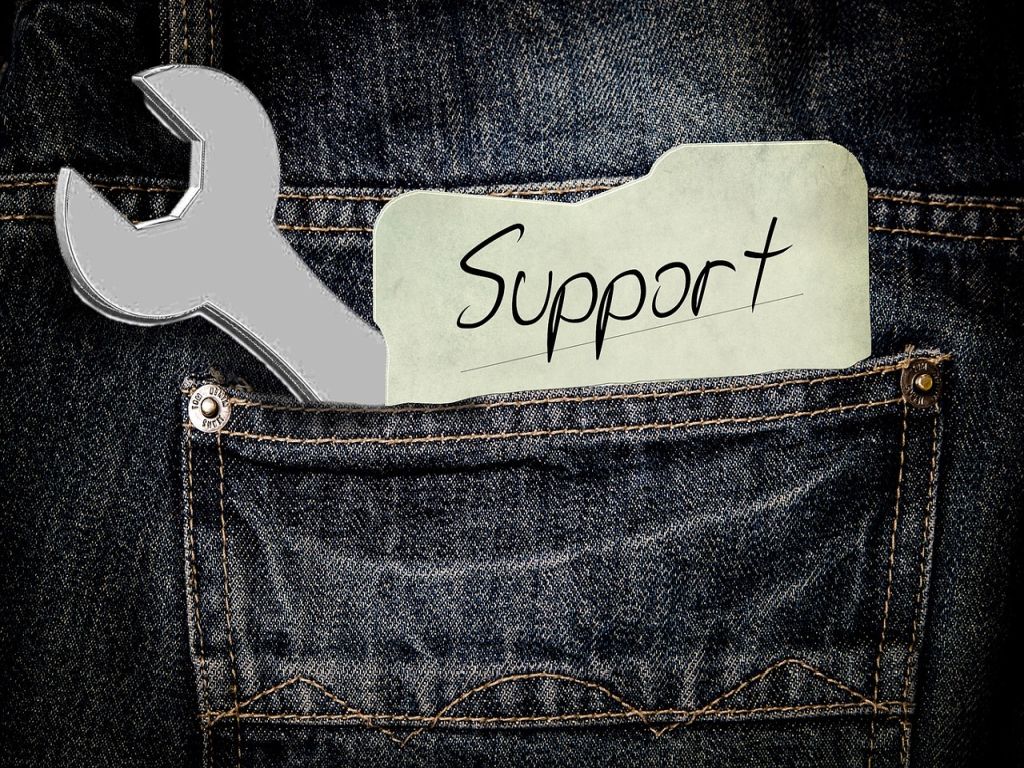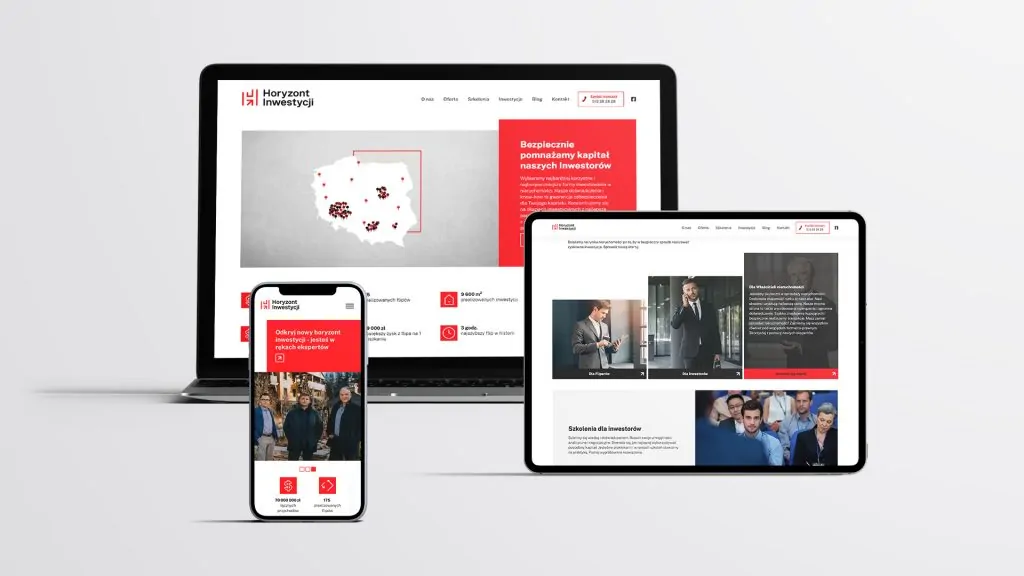Motivation tools and work motivation itself have long been a focus of interest for researchers representing various fields of study. Why this interest in this topic? Because of the impact of motivation on people's working lives. This problem is still relevant today. Among other things, because no single, effective theory of motivation has been developed to date, the application of which would provide both managers and ordinary employees with the satisfaction of a job well done and, at the same time, satisfactory wage measures.
How to choose employee motivation tools?
External employee motivation tools
What is the internal motivation of employees?
The position of today's companies, increasingly depends on the quality of its intangible resources, namely human capital. It plays a strategic role in every company. It is people who today constitute the potential source of competitive advantage. Contemporary companies must therefore seek the right means to do so. Such as the right motivation toolswhich make it possible to properly diagnose, assess and develop the competences of employees. After all, it is the knowledge of employees that largely determines the success of a company.
The essence of employee motivation in the organization
The concept of motivation can be defined in various ways, for example as a specific state. The person is determined to take appropriate steps to achieve their purpose. Each person has an individual level of motivation. It is different in relation to the various activities or functions it performs in the organization.
Motivating tools
From Latin, the word 'motus' means movement, a course of action of the mind. In turn, 'moveo' - to set in motion, to encourage someone to do something, to stimulate an act, to influence someone. The essence of motivation is contained in the above meanings. The ability to positively motivate staff in the work environment is a key attribute for all managers who want to create and maintain a team capable of great achievements. Appropriate motivation tools are essential for this and are also an important element of an employer branding strategy.

How to choose employee motivation tools?
The process of employee motivation depends on many factors, both external and internal. A company can only shape its internal structures and aspects by creating an employer branding strategy. The elements of the external environment are mostly independent of it. Employees and the organisation function in a specific environment. Motivation tools employees cannot therefore be selected in isolation from the socio-economic realities of this space. In doing so, the incentive system is made up of many different elements, such as:
- motivational factors - these are the working environment, i.e. all the technical aspects of the company's operation, and motivation tools, which are divided into tangible and intangible and means of persuasion, which are informative or allocate penalties;
- company task system - it consists of all tasks that must be performed, the way of their specification and transfer to employees, and the method of assessing the performance of duties by employees;
- labor costs - they include, in addition to the basic salary of employees, fixed fees related to insurance, various premiums or securing the company and employees;
- participatory system - characterized scope of the possibility of expressing opinions by employees, negotiating working conditions, the area of independent decision-making and co-decision making with superiors.
Your employees are not doing their best?
We will help them become true ambassadors of your brand!
Motivation depends to a great extent on the processes taking place in a person's consciousness. It determines his or her behaviour. The ultimate goal is the result, for the achievement of which the individual devotes his or her effort, time or resources. Man evaluates the usefulness of a given goal, and this must outweigh the tangible and intangible costs consumed in order to achieve it. The subjective assessment of the probability of a positive outcome is also very important. Belief in its achievement will motivate action even in difficult moments. Therefore, effective motivation tools should be based on three basic assumptions. These are: the distinctiveness of each individual, the characteristics associated with the work and the ways and rules of the company.

External employee motivation tools
External motivation is related to the influence of the environment on a person. The individual takes action when he sees the benefits of achieving the goal - he will receive an adequate reward or profit from performing a given activity. On the other hand, the fear of not completing the task and the expected penalty are also motivating. Another typology introduces the division of motivation into positive, which refers to creating the best conditions for achieving the intended goals, and negative, which is based on the fears and strong emotions of a given person.
Motivation tools
Motivation tools External boils down to all kinds of rewards and punishments. These can be money, promotion, job change, recognition, material reward, public praise and more private ones such as personal affection, support, less formal contact.

You can often hear the opinion that employees are most motivated to act by money. On the other hand, factors such as promotion, professional development, good working atmosphere, employee participation, increased independence in making decisions or satisfactory job content are less important in maintaining motivation. Are you sure?
Outside motivational tools are something an employee receives from others and their extent is determined at organisational level. As practice shows, they do not always have a long-term effect on employee motivation. This is all the more so because no company can continuously apply material motivation tools. In this context, the role of non-wage factors in the motivation process is increasing. Not surprisingly, companies are increasingly looking for knowledge and guidance on how to motivate employees without incurring huge costs.
What is the internal motivation of employees?
Motivation, resulting from a person's internal processes and strengths, significantly influences a person's overall activity. It is determined by four psychological factors prompting a person to undertake a particular task. First is the meaning attributed to an activity or goal. It is its value, its power to influence the individual and any benefits derived from undertaking the challenge. The next aspect is competence, i.e. the knowledge of one's intrinsic capacity to achieve the goal effectively. Next motivation tool Internally, it is the comfort of acting according to one's own rules rather than those imposed.
Motivating tools
Man wants to pursue the goal - as far as possible - "in his own way", maintaining autonomy and independence in action. The last element is the impact that the activity has on the individual and how the employee can influence others and the environment through the performance of the task. The combination of these aspects and their intensity forms the motivation to achieve specific goals and thus the effectiveness of achieving them

Intrinsic motivation means that an employee performs a job because of his or her personal interests, out of a desire to improve and to fulfil his or her own aptitudes. Intrinsic motivation is a better basis for work than extrinsic motivation, so a supervisor should nurture it and strengthen it in various ways. Motivation tools Intrinsic are related to non-wage motivational factors. Intrinsic motivational factors are an intrinsic value - the completion of a task is also a reward. When an employee performs a task, he does it because he wants to, not because he has to.
Material tools of motivation
The most commonly used material motivation in organisations is the remuneration received by employees. The remuneration of work is an important factor in linking the interests of employees to the main objectives of the company. Wage is the main element of remuneration for work and is the price of labour. Its level is determined by the level of demand and supply in the labour market, the valuation of work or as a result of bargaining between company management and the employee. According to another definition, a wage is the financial compensation that a company gives to its employees in return for their work. Remuneration can include a variety of elements, each of which has a different motivating function.
Motivation tools
Material motivation tools are not only a basic salary. Additional remuneration components are divided into permanent elements, e.g. functional allowance, and movable ones, e.g. for overtime hours worked. A salary component may also include benefits earned on the profit or achievements of a given employee, which are settled for a specified period. All the practices applied should be based on the remuneration system constructed in the company.

Non-material incentives
Material motivation tools is not the only weapon available to companies. Another sphere that managers can reach into is intangible tools. They relate to employees' needs, such as the need for respect and recognition, good relationships with others, creativity and development. These factors are based on employees' individual goals and ambitions. The main motivation tools in this area are: creating a friendly organisational culture, promotion, leadership style, praise, distinctions, recognition, participation, training and professional development, performance and job evaluation, career planning, internal communication, employment conditions and relations, the content of the work and employee opinion polls.
A good working atmosphere, interaction based on norms and values that are also close to the employee, reinforces the employee's commitment and job satisfaction. Building positive emotions and good contact with superiors and co-workers can significantly influence the industriousness and effectiveness of employees. The communication system is also important to support the motivation function in an organisation. Employees want internal communication to be easy and transparent. A conflict situation arises when all the necessary information does not reach the employee or is not communicated directly to him or her.
Motivation or manipulation?
In the case of motivation It is important to emphasise the difference between 'motivation' and 'manipulation'. Unfortunately, it is often the case that these terms are treated as synonyms. It should be noted that motivation is not synonymous with manipulation, even though there is a very fine line between the two. What separates these concepts is the intention. In the case of manipulation, the aim is to use the manipulator to achieve his or her own goals. In motivation, the aim is for the motivator to convince the motivated that their goal is common.
The role of motivation tools in modern organisations
Effective motivation tools are key to building an engaged and productive team. In this era of rapidly changing work realities, employers need to use a variety of methods to keep employees highly motivated. Incentive instruments, if properly selected, can significantly influence the atmosphere in the workplace, resulting in more effective teams.
Financial and non-financial motivation tools
Among the most popular employee motivation tools include both those related to finance, such as bonuses, pay rises or bonus schemes, and non-financial ones. Flexible working hours, opportunities for promotion, training or simple recognition for a job well done are examples of incentive instrumentswhich are equally effective. Their effectiveness depends on the ability to adapt to the individual needs of the employee.
How to use motivational tools effectively?
Appropriate use tools for motivating employees requires an analysis of the team's needs. Satisfaction surveys, regular meetings and open communication help determine which solutions will deliver the best results. Creating a personalised approach to motivation allows not only for employee satisfaction, but also for long-term benefits for the organisation.
Employer branding to support team motivation
Activities in the field of employer branding support the process of creating commitment and identification of employees with the company. Identification with the organisation's values and the perception that the organisation is an attractive place to work are important elements in building motivation. Cooperation with employer branding agency can further enhance the effectiveness of such activities.
Summary
Use of employee motivation tools is not only a way to increase efficiency, but also to build lasting relationships within the organisation. With a thoughtful approach to instruments for employee motivation companies can create a working environment that fosters commitment and loyalty. Combining the right actions with employer branding provides a solid foundation for success.
Motivating tools
The motivation process is about reaching a goal that is in the common interest of the motivator and motivated person. They both form a collaborative team. However, the factor that differentiates them is hierarchical dependence. This, however, is not at all tantamount to decisive centralization, limiting creativity and inventiveness of the motivated. Some interpretations of the motivating role are even inclined to prevent the manager from interfering in the activities of the staff, but only to coordinate them.

Regardless of the implemented motivation tools, it is fundamentally about one thing - employees should identify with the company's goals and strive to achieve them. With additional tools at their disposal, such as the following sales supportwill contribute to your business success.
Will your company need support in this area? contact us. With the help of the tools recommended by Commplace specialists, you will soon notice the difference.
Worth knowing:
How to match the tools to the employee motivation process?
The process of employee motivation depends on external and internal factors. In order to effectively select tools, factors consistent with socio-economic aspects should be taken into account.
What influences the employee motivation system?
There are many factors that affect the motivation system. motivational factors, the task system prevailing in the company, labor costs and the participatory system. However, to a large extent, motivation depends on the processes that take place in human consciousness.
What are the material tools of motivation?
The most popular and most frequently used is, of course, employee remuneration. However, not only the basic salary is at stake, but also all kinds of extras, including, for example, bonuses or cash prizes. All these elements make up the company's remuneration system.

